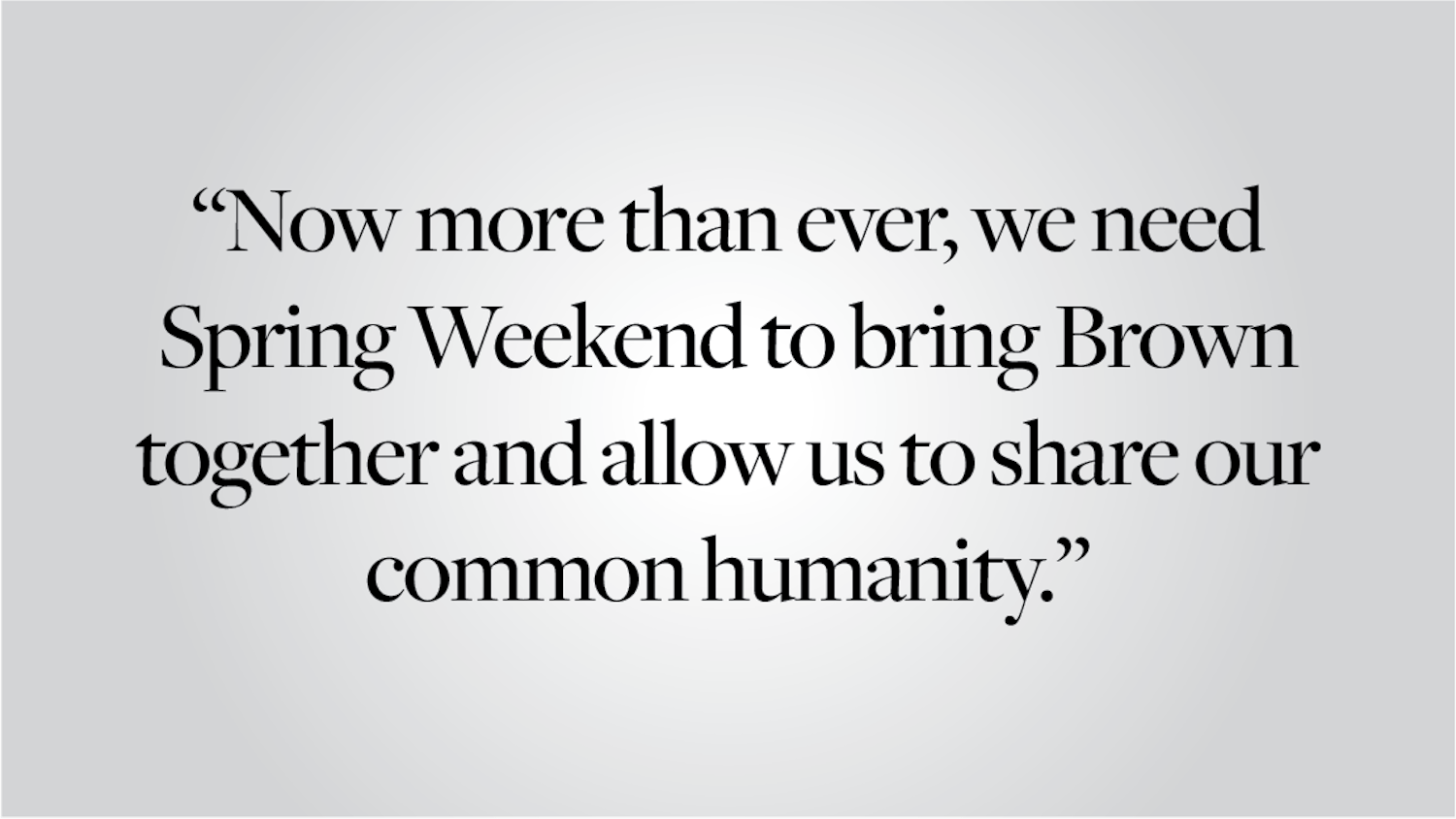I recently had the pleasure of attending “A Conversation with Leana Wen, M.D.” at the Alpert Medical School. Dr. Wen is the incredibly accomplished president of Planned Parenthood. She immigrated to the United States at the age of eight, started her undergraduate degree at California State University at Los Angeles at age 13 and later completed medical school at Washington University in St. Louis. Among her plethora of post-medical education accomplishments, she has gone on to serve as the Health Commissioner in Baltimore, where she helped fight the opioid epidemic.
Still, I was disappointed that the event was not the “conversation” it claimed to be. The event essentially consisted of a single medical student moderating the conversation with a list of questions, which Wen answered beautifully and eloquently. Though her deeply personal narratives and astute identifications of injustices related to abortion within the legislative system riveted the audience, there were no mechanisms built into the event that facilitated a Q&A session. Given the varied opinions on abortion and rapidly evolving medical technology, this is exactly the kind of event in which an open forum for questions is imperative.
As it happens, I had a few questions myself: Due to advances in medical technology, we are now able to sustain a fetus outside of the womb to successful full-term development at an earlier point in pregnancy. At what point, if any, do you believe, a fetus’s right to life matches or outweighs a woman’s personal autonomy regarding her pregnancy? If this point exists, do you think it should be transient and based off the current medical technology we are developing?
The legal arguments for and against abortion, decided by the Supreme Court in the 1973 Roe v. Wade case and the 1992 Planned Parenthood v. Casey case, demarcated the legality of an abortion based on a fetus’s viability. But as medical technology progresses, a fetus’s viability will change with it. Thus, will the Court’s point of viability change with advances in medical technology? I believe the thought processes underlying this question may depart from the pro-choice beliefs many Brown students hold.
Most of us agree that in the vast majority of cases — barring, for example, serious potential harm to the mother — it would be wrong to abort a third-trimester fetus, according to a poll from Gallup. However, why should we feel any differently about a fetus in its third trimester than we do a fetus late into the second? This boundary is in fact quite arbitrary, legally established in Roe without scientific evidence connecting viability directly with the third trimester. Before that trimester, a woman has bodily autonomy and the right to make her decision regarding an abortion.
The trimester system, in general, is not per se based on anything biological. While there are distinct fetal developments that occur during pregnancy, there is no absolute reason why that growth should be divided into three stages. Furthermore, since our technology has progressed, a fetus in an earlier stage may soon be just as viable as it is in the third trimester — a factor that could not have been taken into account in 1973.
While Roe is the most cited abortion case, the Supreme Court revised its decision about abortion in Casey, proving that the point of viability can change in the eye of the law. Casey removed the three-trimester framework and acknowledged that viability could occur at 24 weeks or maybe even earlier as medical technology progressed. While in Roe and Casey, the point of viability upheld a woman’s bodily autonomy for the majority of her pregnancy, future cases regarding viability could ebb the line and take away what we now may even consider a woman’s inalienable right.
Take, for example, an instance when a woman’s health and safety is at risk because of her pregnancy. In the past, it would have been impossible for her to carry the fetus to term without posing a significant danger to her life — thus resulting in legal rights to have an abortion if she chooses. But now, with medical technology developing that could remove the fetus and place it in an environment outside of her body, would she still have the right to terminate the pregnancy? It’s unclear. This question and others will increasingly have to be faced in an age where technology may actualize these scenarios.
For students who are pro-choice, it is especially important to engage with these ideas instead of dismissing them. As medical technology progresses, these new questions about viability will come to the forefront on all sides of the debate. In order to continue to advocate for a woman’s bodily autonomy, you must be able to understand and be comfortable with the facets of this new debate. Conversations such as the one Wen provided should give our campus an opportunity for larger debates about abortion in the technological age. Must we ignore these questions because they are polarizing, or even uncomfortable, or is this exact type of discourse needed on our campus?
I believe the lack of discussion around Wen’s event and the topics it raises is indicative of a broader trend within our community. Conversations about these polarizing topics are essential at a University in which free discussion and critical thinking are at the heart of learning. The fact of the matter is that millions of Americans are pro-life, anti-vaccine, anti-gun control and opposed to climate change legislation. I don’t by any means claim to stand with them but rather believe in the importance of thinking critically about the issues that surround us, reasoning out both perspectives and attempting to find a kernel of truth in the process.
Perhaps as a community, we should be more compassionate, understanding and empathetic to people who have views different from our own. We must face these tough questions if we want to evolve our own views or be adept at challenging others to evolve theirs. While Wen’s discussion gave me a chance to highlight contentious and important questions centered around abortion, we as a campus must also seriously consider other controversial opinions held by many people inside and outside of the Brown community.
As a pre-med student, I have noticed that modern physician training has become more centered around empathy and humanism, or understanding the “patient and not the disease,” as mentioned in Wen’s lecture. I urge our community to utilize these methods of compassion in an attempt to understand the beliefs other humans in America have about the world around us.
Jay Khurana PLME ’18.5 can be reached at jay_khurana@alumni.brown.edu and would be happy to further the conversation! Please send responses to this opinion to letters@browndailyherald.com and op-eds to opinions@browndailyherald.com.





